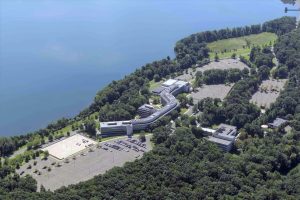What do you do with a site and its structures after it is no longer needed for its original purpose, the one for which it was designed and built? How does an abandoned or not actively functioning site affect the well-being of the surrounding neighborhoods? Can it serve a new purpose? What conditions need to be there and what needs to happen to make recycling a site a more attractive option for a developer than demolition or new developments outside the community? These are the questions that adaptive reuse planning seeks to answer.
What are some of the steps to adaptive reuse planning?
- Ownership and Development Considerations: Who currently owns the site? Does the owner have proposed uses in mind or is the owner looking to prepare the site for wide or targeted appeal to development investors?
- Market and Infrastructure Analysis/Community Outreach: What are the needs and wants of the surrounding neighborhoods and markets that may be filled by the built assets’ proposed new use(s)? What new needs may be created by the built assets’ proposed new use(s), and can they be supported by the existing markets and infrastructure?
- Site Evaluation: How was the site used before and what is the current condition of the land and built assets? Are there previously unused or underused areas of the site that could be activated to enhance the proposed new use(s)?
- Feasibility and Cost/Benefit Analyses: What purpose(s) can the built assets support in their current state or with an affordable level of rehabilitation, retrofitting, and additional construction? Are there permitting concerns or challenges to meeting modern building standards and regulations? Are there possibilities for cash inflow during the construction process? Do the projected benefits and returns on investment justify the costs? Has this type of project worked in comparable sites and markets?
What are the potential benefits of adaptive reuse of a site?
- Reduces destruction waste and consumption of construction resources and materials, which can also result in redevelopment cost savings and reduced project completion time, especially if partial occupancy and the resulting cash inflow is possible during a phased construction process.
- Keeps already developed land in productive use, benefitting the existing neighborhood, and preserving open space that may otherwise be developed to accommodate urban sprawl.
- Maintains historic character of a neighborhood when historic structures are involved, and development projects that involved rehabilitation of historic structures can sometimes be eligible for funding or tax incentives. What’s more, traditional masonry and stone buildings are often more climate resilient.
 For an example of an adaptive reuse planning effort for a large suburban former industrial complex, check out this article about the redevelopment plan for the more than 180-acre waterfront campus and commercial structures of the former Toys R Us Headquarters located in the Township of Wayne, Passaic County, NJ. The plan was funded by a New Jersey Economic Development Authority (NJEDA) 21st Century Redevelopment Grant and prepared by the team here at BRS!
For an example of an adaptive reuse planning effort for a large suburban former industrial complex, check out this article about the redevelopment plan for the more than 180-acre waterfront campus and commercial structures of the former Toys R Us Headquarters located in the Township of Wayne, Passaic County, NJ. The plan was funded by a New Jersey Economic Development Authority (NJEDA) 21st Century Redevelopment Grant and prepared by the team here at BRS!


